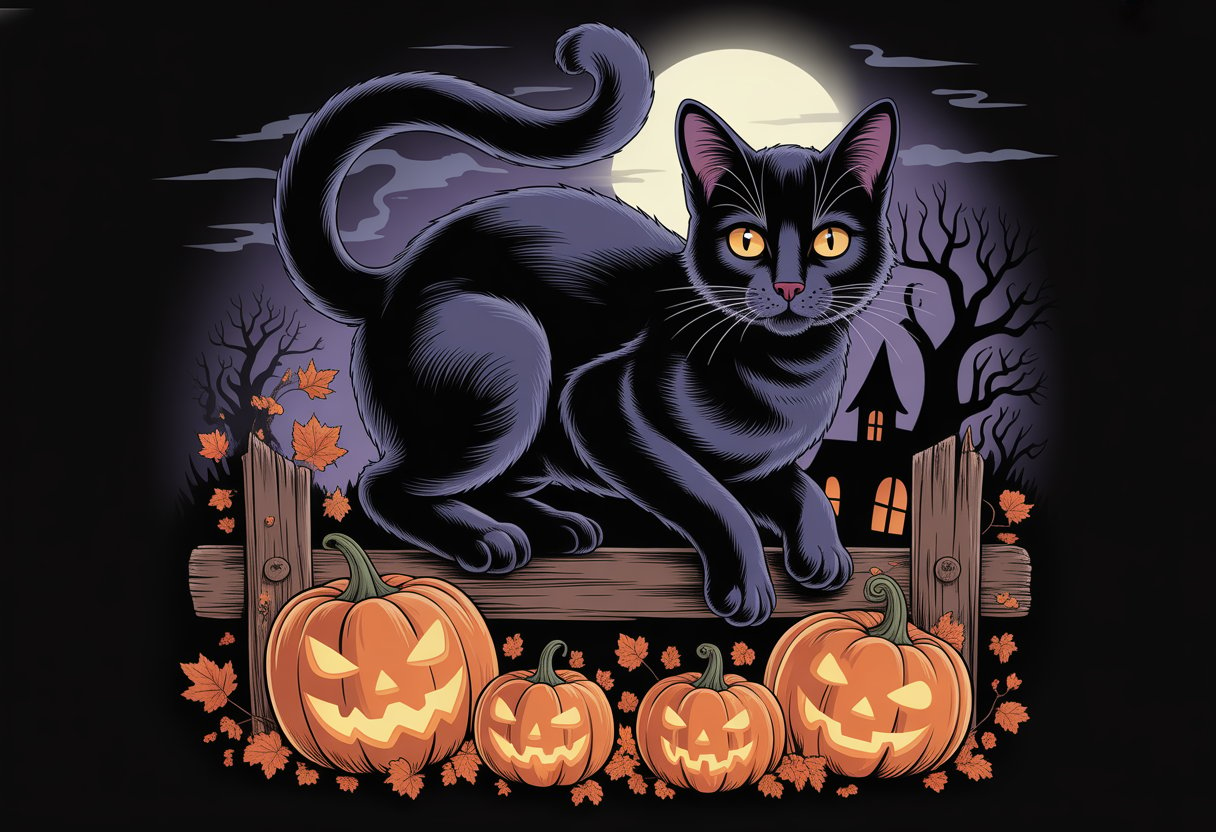
When Halloween pops into your mind, a few images are basically guaranteed—pumpkins, witches, ghosts, and, of course, black cats. Their dark coats and that air of mystery make them one of the most iconic sights of the season.
Black cats totally steal the show. They blend history, superstition, and a certain style that just feels unmatched by any other Halloween symbol.
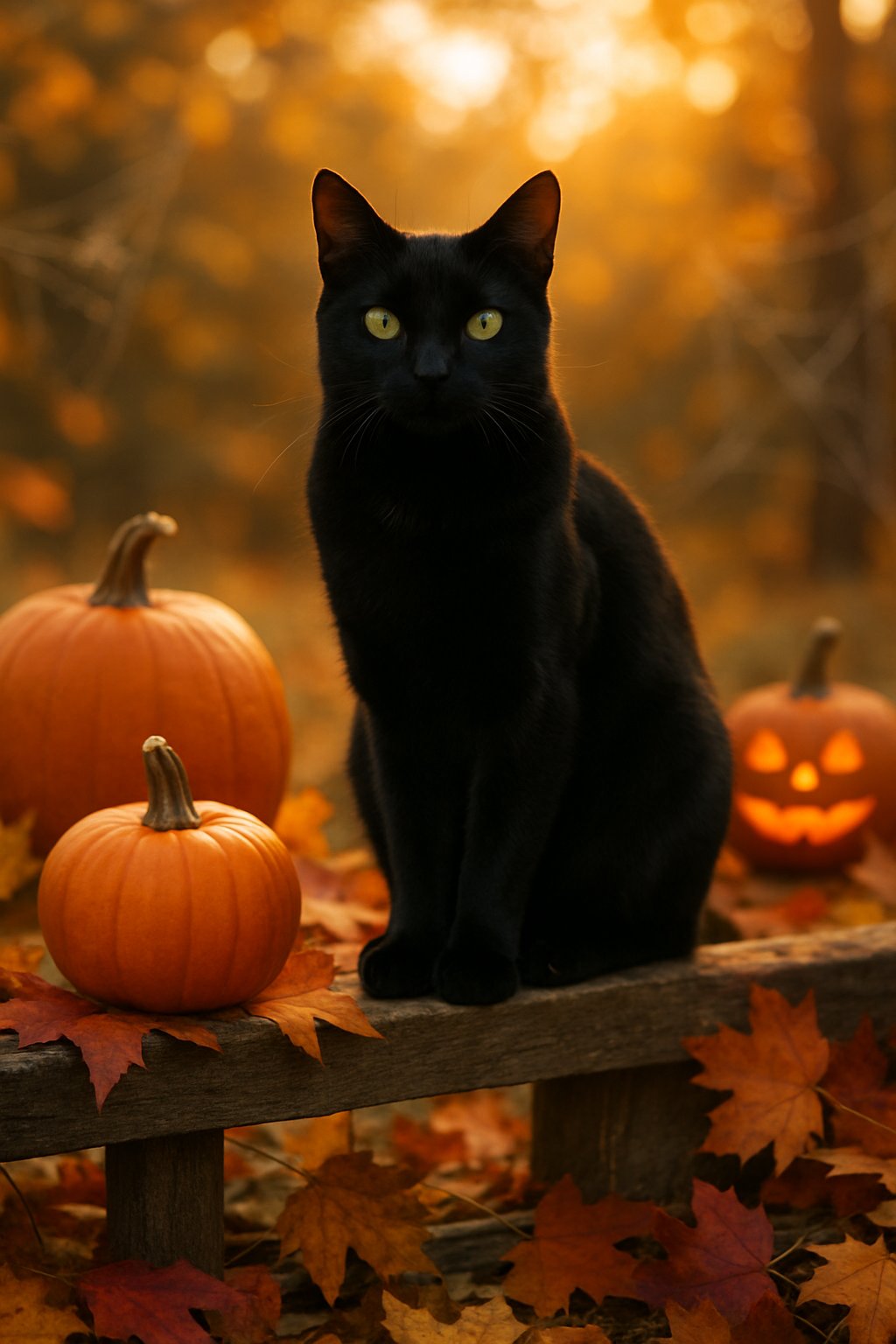
You’ll spot them on decorations, costumes, and even woven into stories that have lasted generations. From old legends to the way we celebrate now, black cats keep hanging onto their starring role in Halloween traditions.
Honestly, they aren’t just background characters—they’re the real stars of the holiday.
Black cats have deep roots in witchcraft myths, making them perfect for Halloween’s spooky mood.
Old stories tie black cats to witches all the time. Back in medieval Europe, people thought witches kept black cats as companions, or even used them to work magic.
Some folks went so far as to claim witches could turn into cats and sneak around unnoticed. That idea stuck, and it’s a big part of why black cats still seem mysterious (and a little dangerous) today.
If a black cat showed up at night, people sometimes panicked, thinking a witch was nearby in disguise. Pretty wild, right?
In some tales, if a black cat crossed your path, you were in for bad luck. That made everyone extra cautious, especially during those witch-hunting times.
When Halloween started mixing in witches and ghosts, black cats just fit right in. Their dark color, silent moves, and ties to old myths make them the perfect match for October’s eerie energy.
Their black fur just nails the mysterious vibe of Halloween night.
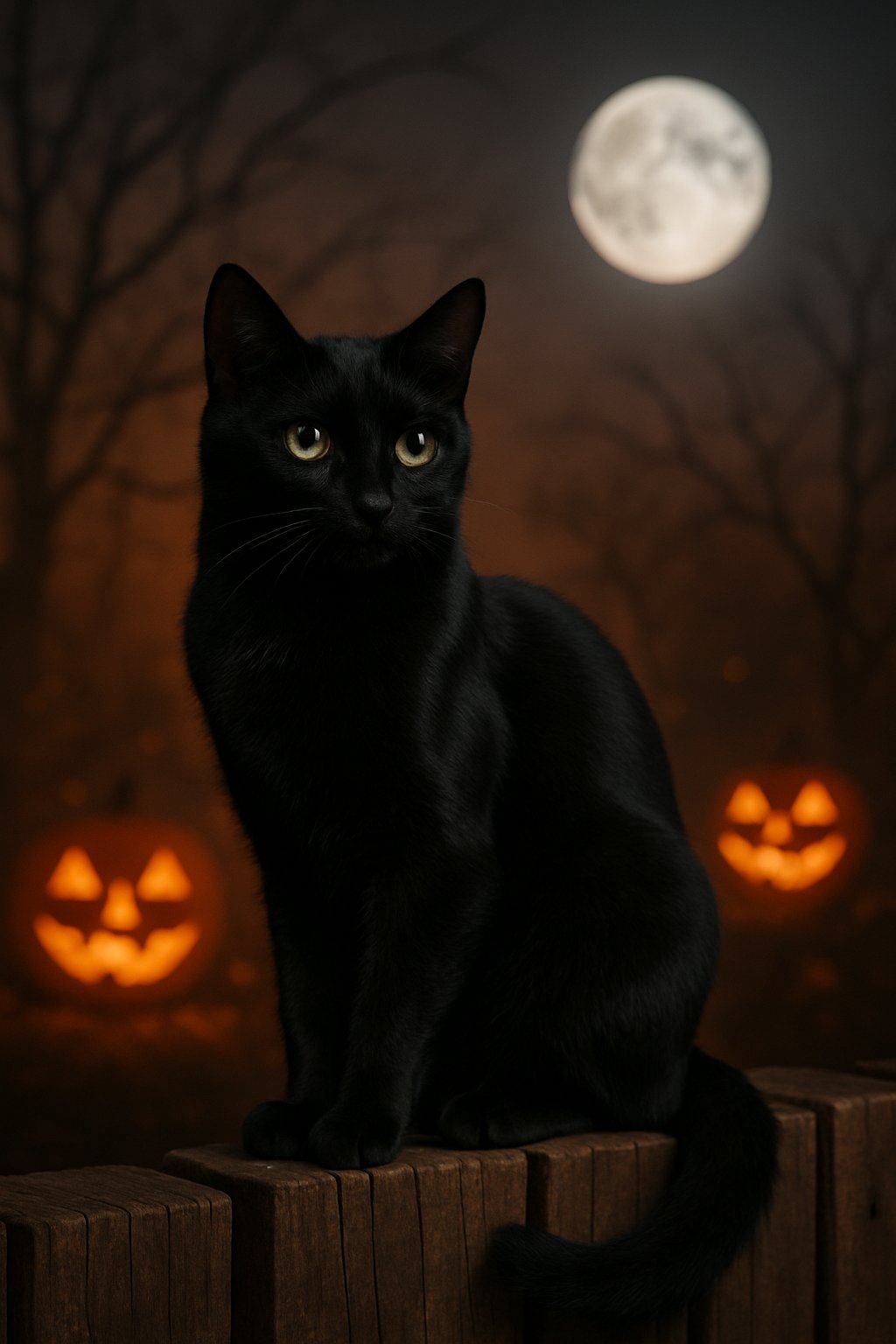
When a black cat prowls at night, it basically melts into the shadows. Sometimes, you only catch a glimpse of its eyes, which somehow makes the moment feel even more mysterious.
That natural camouflage is a big reason black cats feel so right for Halloween. The holiday is all about the unknown, and a cat that can vanish into darkness just adds to that.
You notice how their sleek coat catches the light from a candle or jack-o’-lantern. That little bit of shine makes them pop in any Halloween setup.
Because of their dark color, black cats seem to carry this quiet, almost secretive energy. Sometimes you don’t even know they’re there until they’re right next to you.
This mix of elegance and secrecy? It’s exactly why black cats and Halloween go hand in hand.
In medieval Europe, people believed black cats worked with witches as “familiars.”
When you picture Halloween, it’s impossible not to see a witch with a black cat tagging along. That image goes way back to medieval Europe, where folks thought cats—especially black ones—helped witches with their spells.
People saw these cats as more than pets. They feared black cats had supernatural powers or were demons in disguise.
During witch hunts, just owning a black cat could get you accused of witchcraft. Many cats were killed right along with women accused of being witches.
The old connection between witches and black cats still pops up everywhere during Halloween. That’s a big reason they’re such an iconic part of the holiday.
Black cats shine in Halloween decorations and costumes—you can’t miss them.
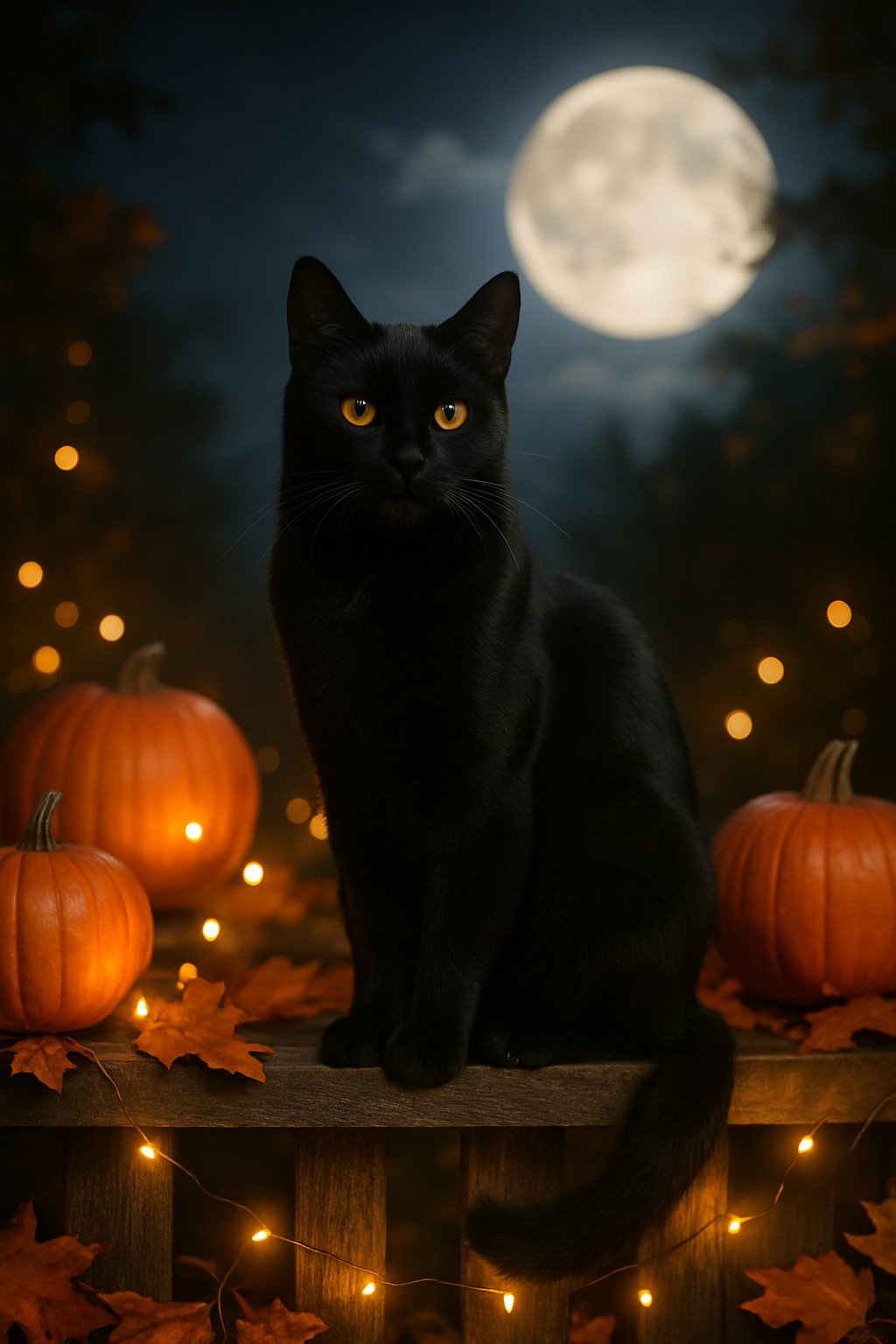
When you think Halloween, you probably see pumpkins, ghosts, witches, and black cats. Their sharp shape and dark fur make them super easy to spot on decorations and costumes.
You’ll find them on window stickers, banners, and even candy wrappers. Black cats pop up in costumes too—some folks go all out with ears and tails, others just use a mask or a bit of makeup.
You might even see cupcakes decorated with cat faces or themed cocktails at Halloween parties. These little touches keep black cats at the center of the holiday.
Walk into any store in October and you’ll see them everywhere. Their presence just helps set the spooky but playful mood everyone expects.
Folklore says black cats bring bad luck, which fits Halloween’s superstitions perfectly.
You’ve probably heard it: if a black cat crosses your path, you’re in for bad luck. That idea’s been around for centuries, especially in Europe, where people tied black cats to witches and the supernatural.
When Halloween comes around, those spooky superstitions just fit right in. You expect ghosts and witches, so of course black cats belong in the mix. Their dark coats and quiet movements only make them more mysterious.
In the United States, black cats got even more tied to witches during colonial times. People believed witches kept them as “familiars,” so black cats became a big part of Halloween’s stories about magic and fear.
Not every culture sees black cats as unlucky, but that “bad luck” legend really stuck in Western traditions. Maybe that’s why you see them on so many decorations and costumes every October—they just fit the mood.
Black cats have a real-life mysterious charm that decorations just can’t match.

Spotting a black cat isn’t like seeing a pumpkin or a plastic skeleton. Black cats move, watch you, and sometimes vanish before you even realize it. There’s something unpredictable about them.
Their dark coats really stand out at night. That sleek look gives them a natural mystery—no legend required. And those glowing eyes? Impossible to ignore.
Unlike paper ghosts, a black cat brings centuries of history and superstition with it. People once thought they were tied to witches and magic. Even now, there’s a strange mix of curiosity and caution when one crosses your path.
Depending on where you’re from, black cats can mean bad luck or good fortune. That split keeps them interesting and totally unique among Halloween icons.
The Cultural Significance of Black Cats in Halloween
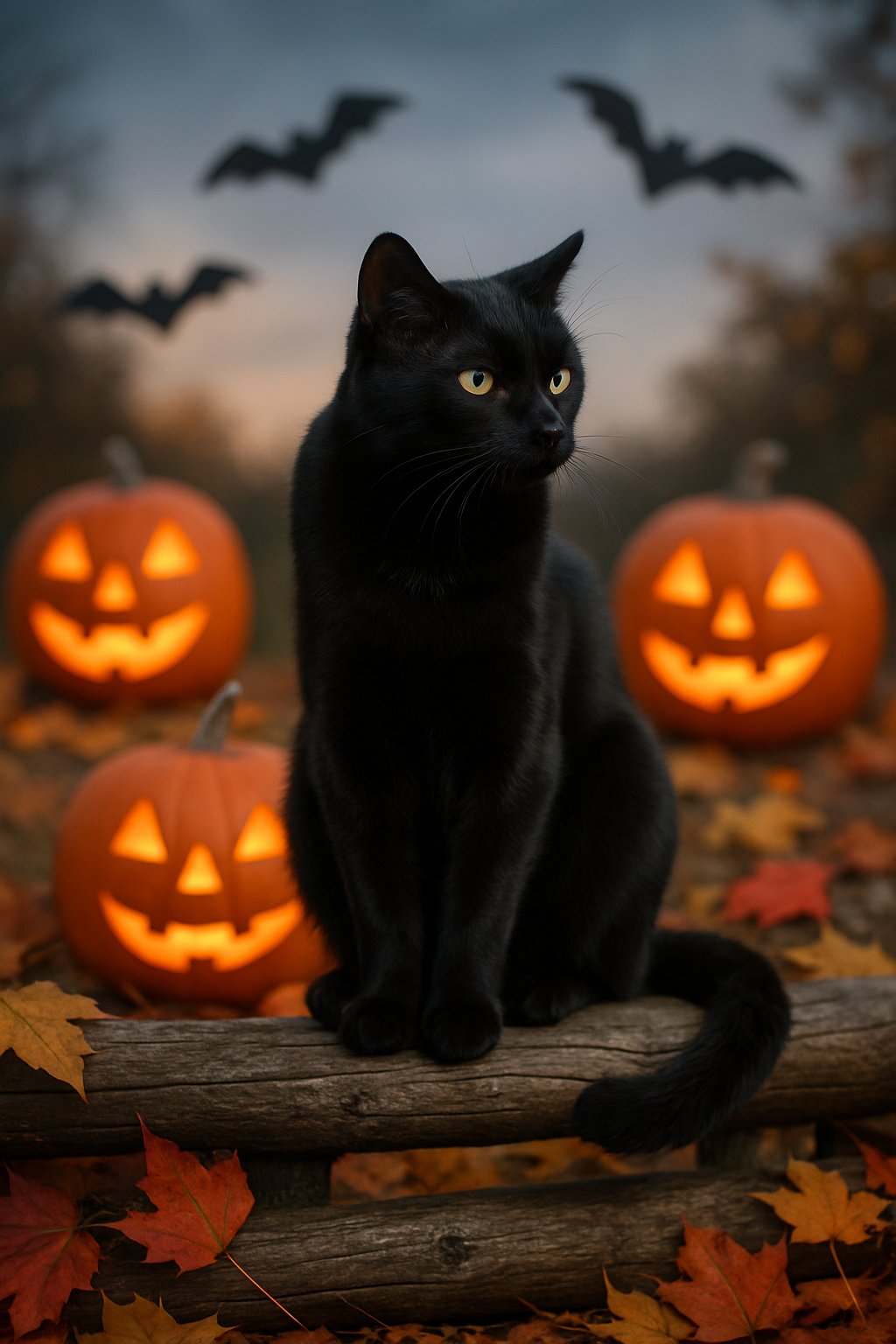
Black cats carry a long, tangled history of fear, superstition, and admiration. They got mixed up with witches and magic, and now they’re basically the face of Halloween fun.
Origins of Black Cat Myths
You can trace black cat myths way back. In Ancient Egypt, cats got respect—sometimes even worship. But in Europe, black cats’ reputation took a turn.
During the Middle Ages, people started connecting them to witches and the supernatural. Many believed witches could turn into black cats or use them as magical helpers. Those ideas spread during the witch trials, when fear and superstition ruled.
Celtic traditions played a part, too. In Samhain festivals—the root of Halloween—animals were seen as crossing between the human and spirit worlds. Black cats, with their dark coats and night habits, fit perfectly into those beliefs.
Symbolism in Modern Celebrations
These days, black cats are everywhere during Halloween. You see them on decorations, costumes, even candy wrappers.
Instead of being scary, they’ve become playful icons that set the perfect spooky tone. Black cats usually show up with witches, broomsticks, and pumpkins. That combo just feels right for Halloween.
A lot of people now see black cats as good luck or just plain charming. Pop culture—TV, books, all of it—has helped turn their image around. Now they’re fun and meaningful, not just spooky.
How Black Cats Inspire Halloween Decor
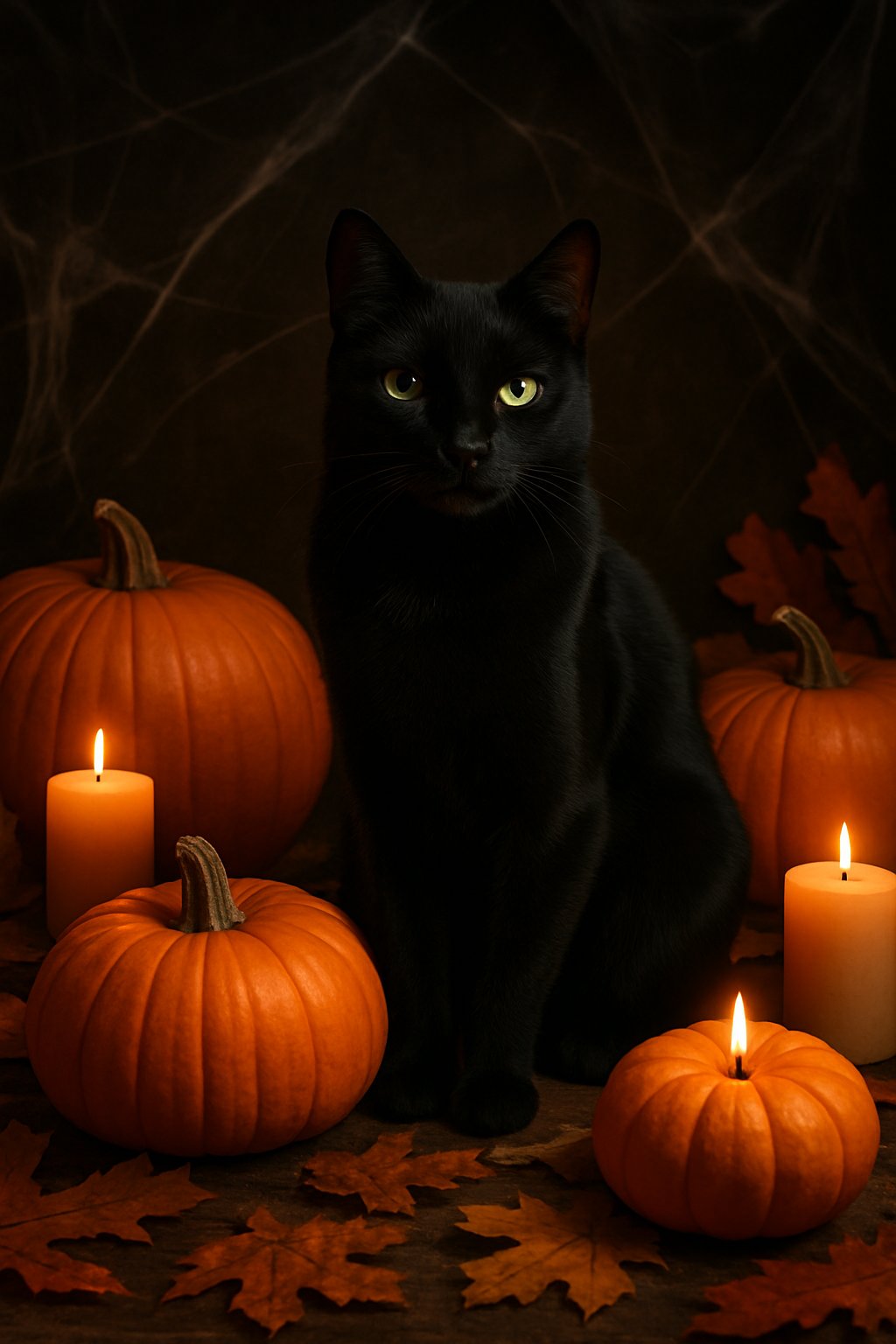
Black cats totally shape how we decorate for Halloween. They show up in costumes, props, and all kinds of themed setups. Their dark color, mysterious look, and long history with superstition make them a go-to for spooky scenes.
Iconic Imagery in Costumes
You see black cat costumes everywhere in October. They’re simple, recognizable, and honestly, pretty easy to pull off.
Throw on some cat ears, a tail, and a bit of face paint, and you’re good to go. Want to get fancier? There are full-body suits and detailed makeup tutorials for a sharper feline vibe.
Kids and adults both love black cat costumes. They can be cute, playful, or a little creepy—depends on your style. Pairing them with witch costumes is a classic move since cats and witches have been linked for centuries.
Accessories make the look pop. You’ll find glittery masks, sequined ears, or even light-up tails in stores. These little extras let you set the mood, whether you’re headed to a fun party or a haunted house.
Influence on Party Themes
Black cats pop up everywhere when you start decorating your home or party space. People love tossing cat silhouettes into window clings, banners, and yard stakes—the simple shape just grabs your attention, especially against lights and shadows.
Stick a glowing green-eyed cutout in the yard or slap one on the wall, and suddenly, you’ve got instant Halloween vibes. It’s almost too easy.
At parties, black cat imagery really fits all sorts of styles. Maybe you want to keep things playful with cartoon cats on cups and napkins. Or, if you’re feeling bold, you can go for a creepier look with shadowy figures and weird lighting.
Both options use the same symbol but totally change the mood. That’s kind of cool, right?
You’ll see black cat props blending in with other Halloween staples—pumpkins, witches, cauldrons, that sort of thing. Mixing them up makes the theme feel complete without going overboard on decorations.
It’s a low-stress way to lock in that classic Halloween look and still keep things flexible and fun.

